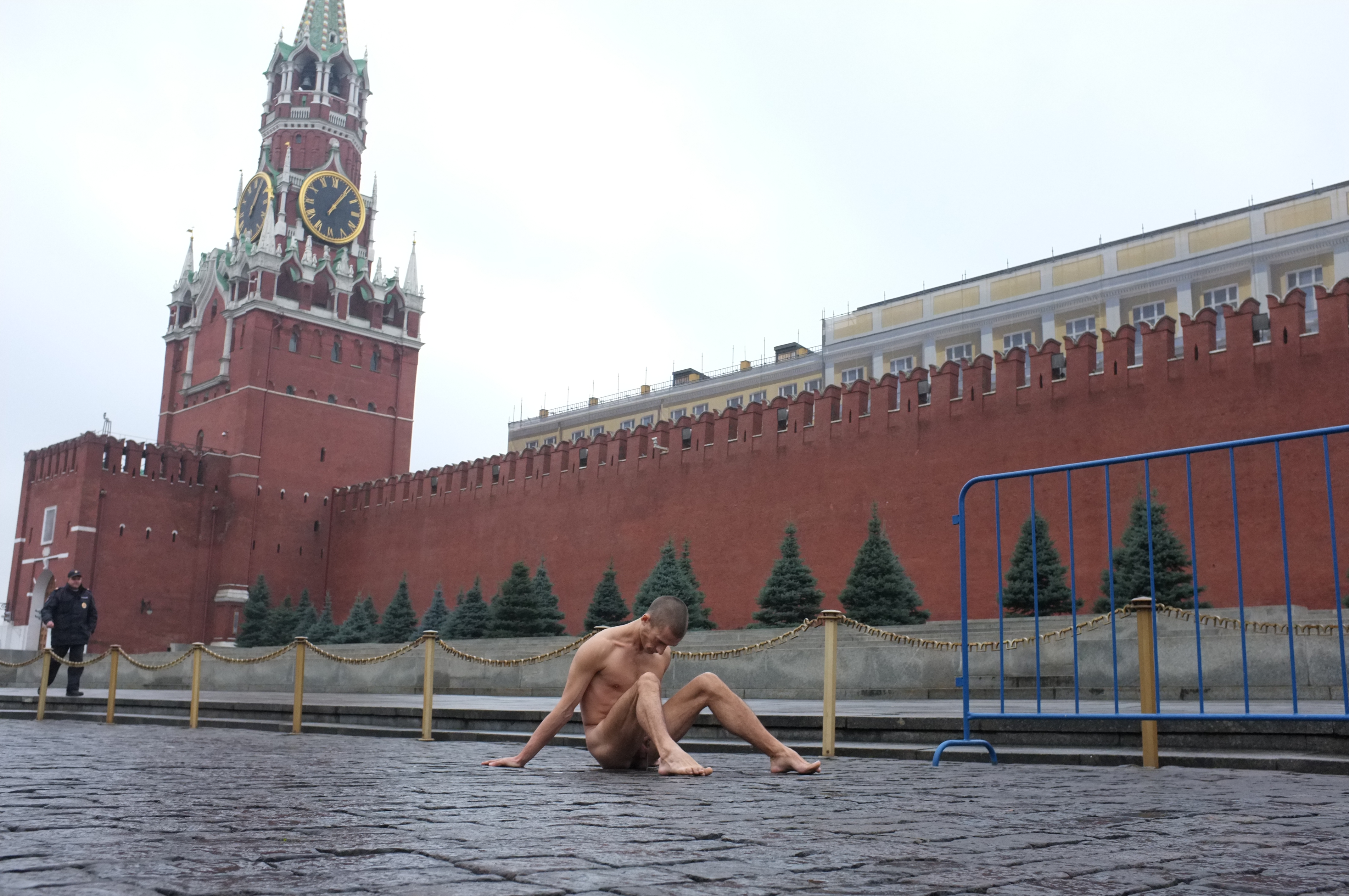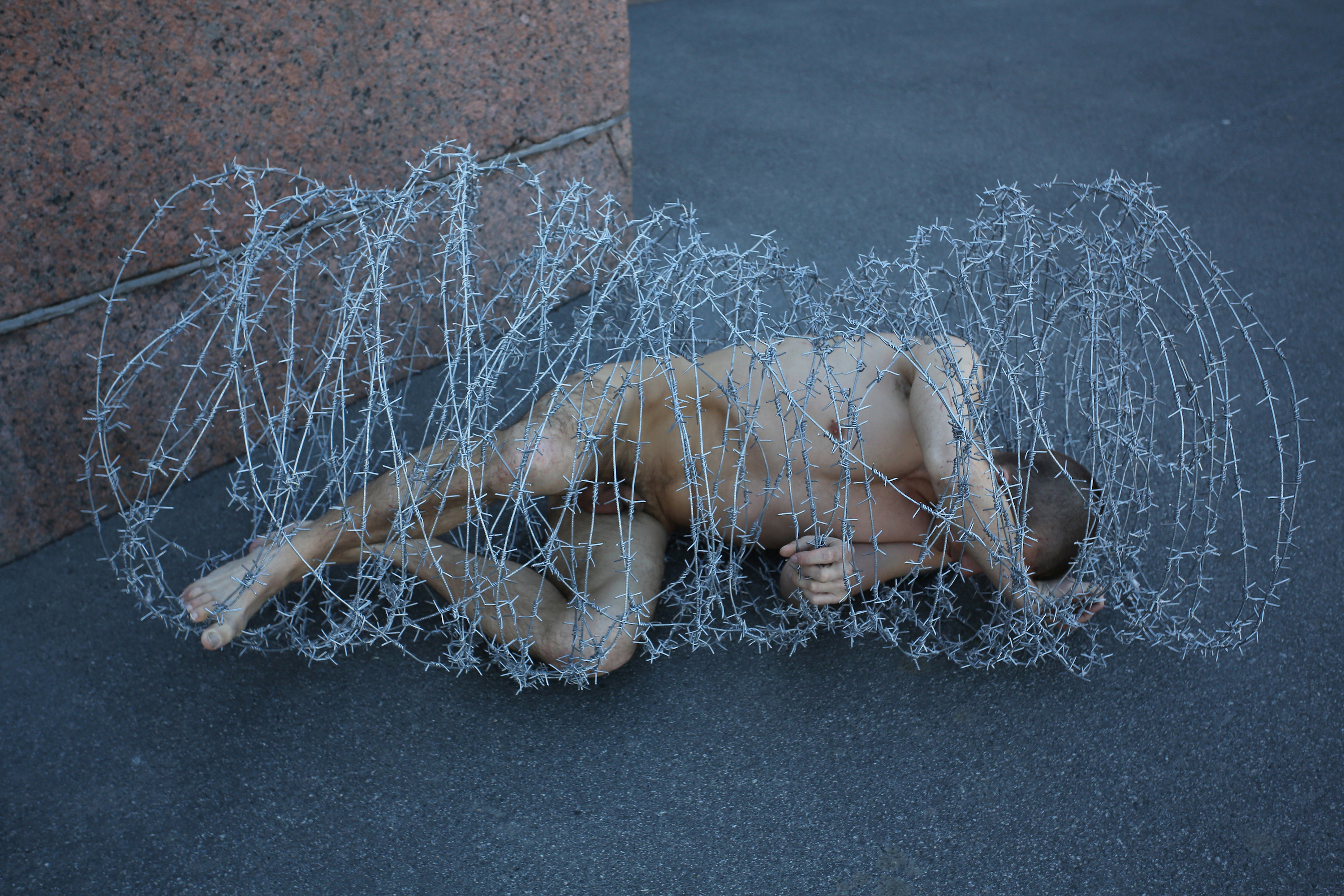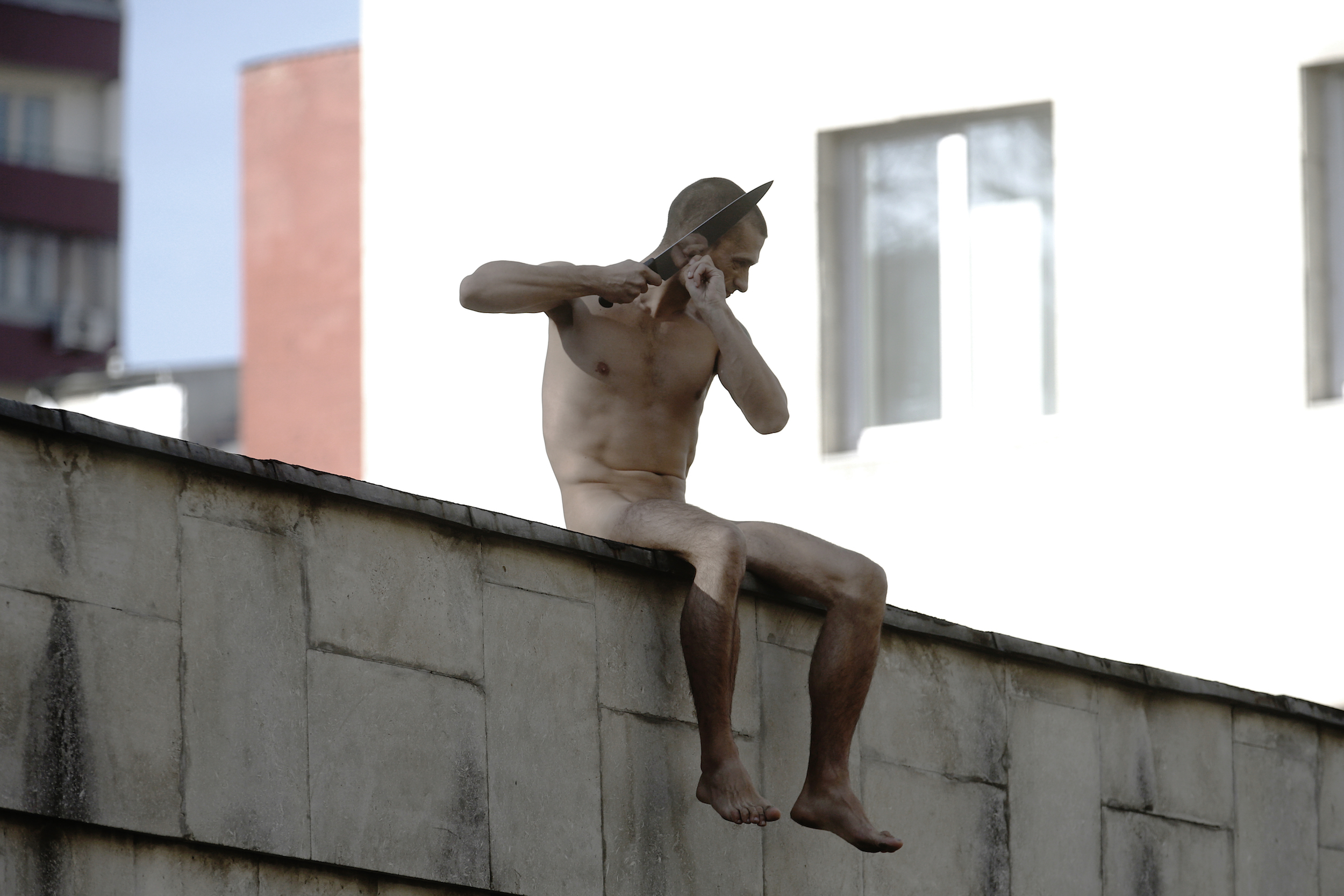
Petr Pavlensky. Fixation, 2013. Performance Still (In Red Square in St. Petersburg). Courtesy of the artist.
Unlike much contemporary performance art, the works of the Russian artist Petr Pavlensky (b. 1984) do not take place within white-walled galleries or museums but rather in public sites burdened with centuries of Russian history: Red Square (the former KGB headquarters), and Serbsky State Scientific Center (the state’s central psychiatric facility). Pavlensky chooses his stages for their incendiary power. His works consist of disturbing acts of self-mutilation, but they are not arbitrary. They are finely wrought gestures that articulate numerous theories on power and violence—among them Louis Althusser, George Sorel, Hannah Arendt, Michel Foucault, and others—with singular, unequivocally metaphorical images.
In Pavlensky’s most well-known work, Fixation (2013), he nailed his scrotum to stones of Red Square and shortly released a statement to the press: “A naked artist, looking at his testicles nailed to the cobblestone is a metaphor of the apathy, political indifference, and fatalism of Russian society.” The performance enacted rumored methods of torture within the gulag, taking them from their clandestine source, and projecting them into public space. But Pavlensky was not simply mimicking the government: upon his arrest and trial, the artist insisted that he be called a “terrorist” (which would result in imprisonment up to twenty years) and that his actions be named “threats” (aktsiya), using language to transgress the role of the artist into that of an instigator. Other performances include Carcass (2013), in which he wrapped his body (again, naked) in barbed wire and rolled on the grounds outside the St. Petersburg Legislature building. Unmistakable metaphors, the specificity of place, and acts of violence unite the aktsiya.

Petr Pavlensky. Carcass, 2013. Performance Still (On the steps of the Legislative Assembly in St. Petersburg). Courtesy of the artist.
One thing is certain: Pavlensky’s intended audience is the Russian government, and they are watching, captive. The artist has stated, “Every movement by the authorities pulls them deeper in. They become involuntary participants in the production of my art.” In Separation (2014), Pavlensky sat nude on the outer fence of the Serbsky State Scientific Center for Social and Forensic Psychiatry, Russia’s central psychiatric institution, and lopped off part of his earlobe in protest of the forced psychiatric retention of political dissidents. Unsurprisingly, the state responded by detaining him for several weeks of observation. Pavlensky, an ostensibly sane citizen, seated on the threshold between free society and a space of surveillance and control, questioned such a boundary by performing an act of presumed insanity—not only a reference to the Soviet practice of diagnosing political dissenters as insane, but also a provocation to test if they would dare continue such practices in public today.
Like other contemporary performance artists whose work is completed by the participation of the audience—such as Tino Seghal and Andre Serrano—the viewer’s response is integral for Pavlensky. Crucial to his work, the response of the government—which imprisoned the feminist, punk, protest group Pussy Riot for two years for performing in a church—has been surprisingly mild. Pavlensky was given an award from the Human Rights Foundation (later recalled), he was nominated for Russia’s prestigious Innovatsiya Prize (also later cancelled), and the Burger King franchise in St. Petersburg added four new burgers to its menu inspired by his “threats.” Though Pavlenksy has been brought in for psychiatric observation twelve times and been issued a welter of charges, after Threat (2015)—in which the artist set fire to the Baroque wooden doors of Russia’s federal security service (FSB, formerly the KBG)—his arrest resulted in only seven months in prison, and the final verdict of his trial was only a moderate fine. (This is an anomaly: only one percent of Russian trials are acquitted.) In a piece by the Guardian, Pavlensky’s partner, Oksana Shalygina, estimated that the lenient punishment was due to the government’s self awareness of their profile in the west; in this widely known case, they had to save face.

Petr Pavlensky. Segregation, 2015. Performance Still (On the wall to the Serbsky State Scientific Center.) Courtesy of the artist.
The word kremlin means “fortress inside a city,” and the Kremlin building encapsulates the political and military powers of the state. Pavlensky’s acts are both works of art and calculated provocations for the Russian government, intended to illicit certain responses that might expose its corruption. The artist espouses an aesthetic that mimics the violence of the state in order to recontextualize government spaces, simultaneously elevating the voice of the artist so that it become its own fortress within the city, a bulwark against prevailing government oppression. As individual artistic expression is heightened, and the limits of free speech in contemporary Russia are publicly exposed. His body is an irrefutable medium of expression, which can only be stopped by the state at the expense of their national and international reputation.



